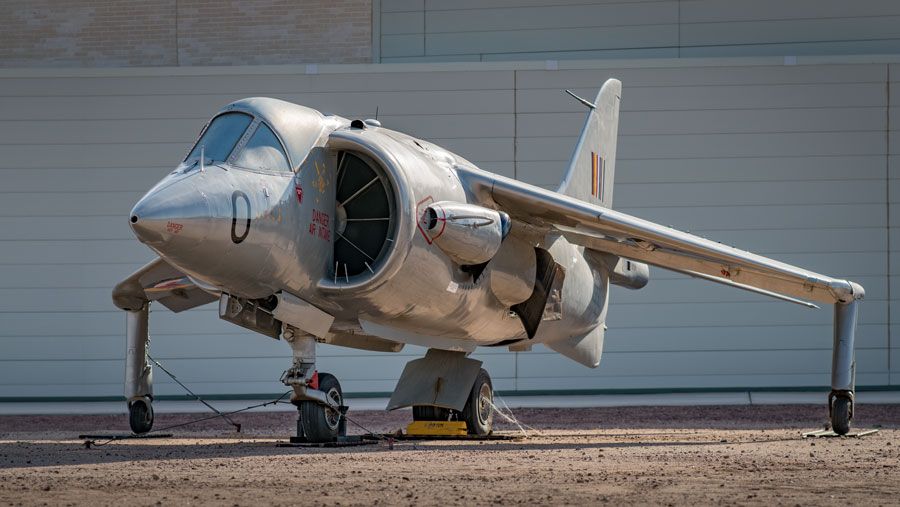Hawker Kestrel FGA.1 (XV-6A)
In 1957 the Hawker Aircraft Company began private development of a vertical take-off and landing (VTOL) aircraft built around the new Bristol Engine Company’s Pegasus engine. The aircraft called the P.1127 was initially built without government funding but it soon attracted the attention of the British government which funded further development.
In 1964 the service test version of the aircraft, renamed Kestrel, was ready for testing. Interest in the aircraft from both the United States and West Germany resulted in the creation of the Tri-partite Evaluation Squadron at RAF West Raynham. This squadron was made up of pilots and ground crews from the Royal Air Force, West Germany, and the United States Air Force, U.S. Navy, and U.S. Army. Beginning in March 1965 they developed operational procedures for the Kestrel including the practice of short take-off and vertical landing (STOVL) that is the primary operating technique for the U.S. Marine Corps’ AV-8 Harriers. After testing was concluded in England at the end of 1965, six of the aircraft were sold to the United States which brought them to North America for further testing. After delivery to the U.S. they were redesignated as the XV-6A and given U.S. Air Force serial numbers. At the time of this testing the U.S. military determined that it did not have a use for an aircraft like the Kestrel. However, within a few years the U.S. Marine Corps began its successful association with the Kestrel’s descendant the AV-8 Harrier.
Wingspan | 22 ft 11 in. |
Length | 42 ft 6 in. |
Height | 10 ft 9 in. |
Weight | 15,500 lbs (loaded) |
Maximum Speed | 300 MPH |
Service Ceiling | 20,200 ft |
Range | 3,660 miles |
Engine | One Bristol Siddeley Pegasus 5 turbojet with 15,200 pounds thrust |
Manufacturer
Hawker
Markings
Kestrel Evaluation Squadron, RAF West Raynham, 1965
Designation
FGA.1
Serial Number
XS690 (64-18264)
